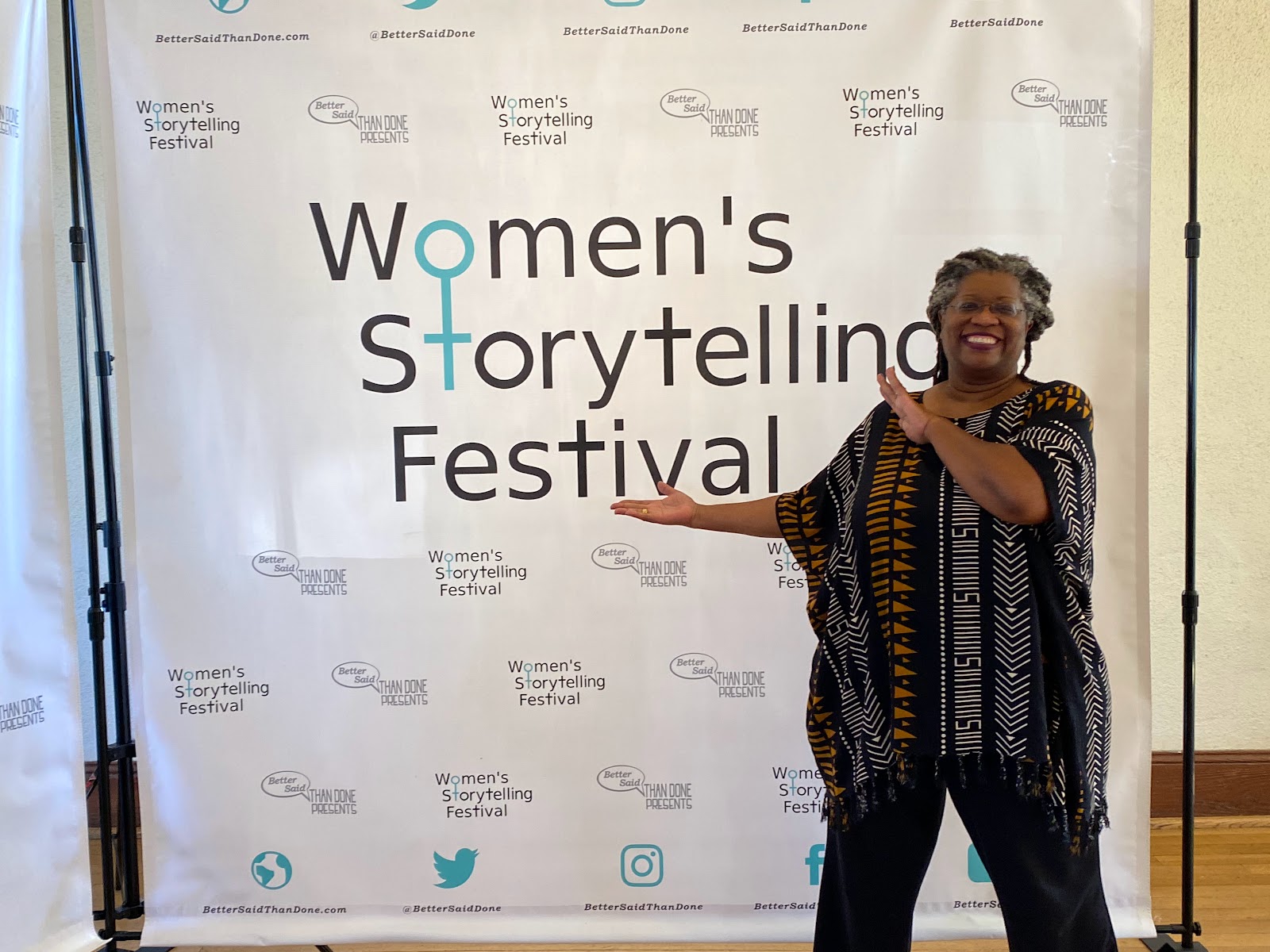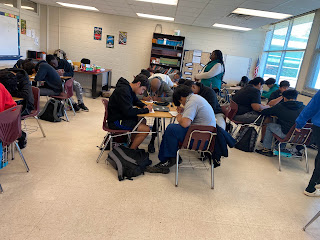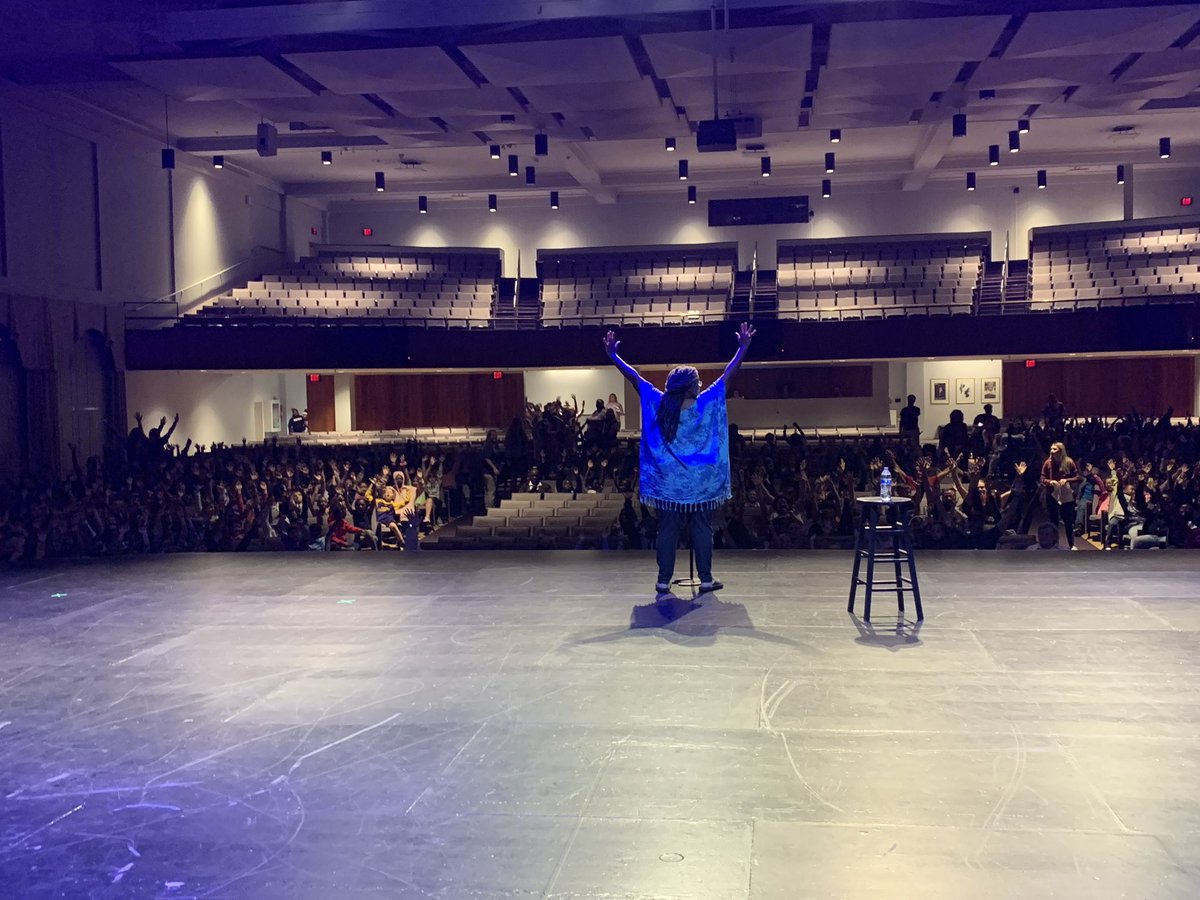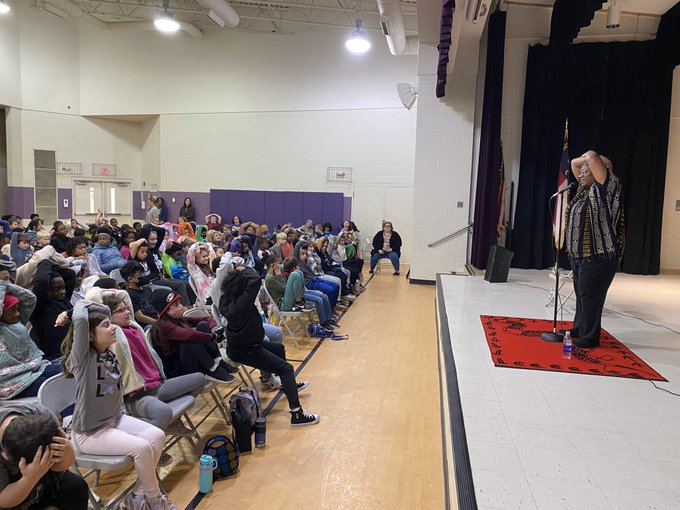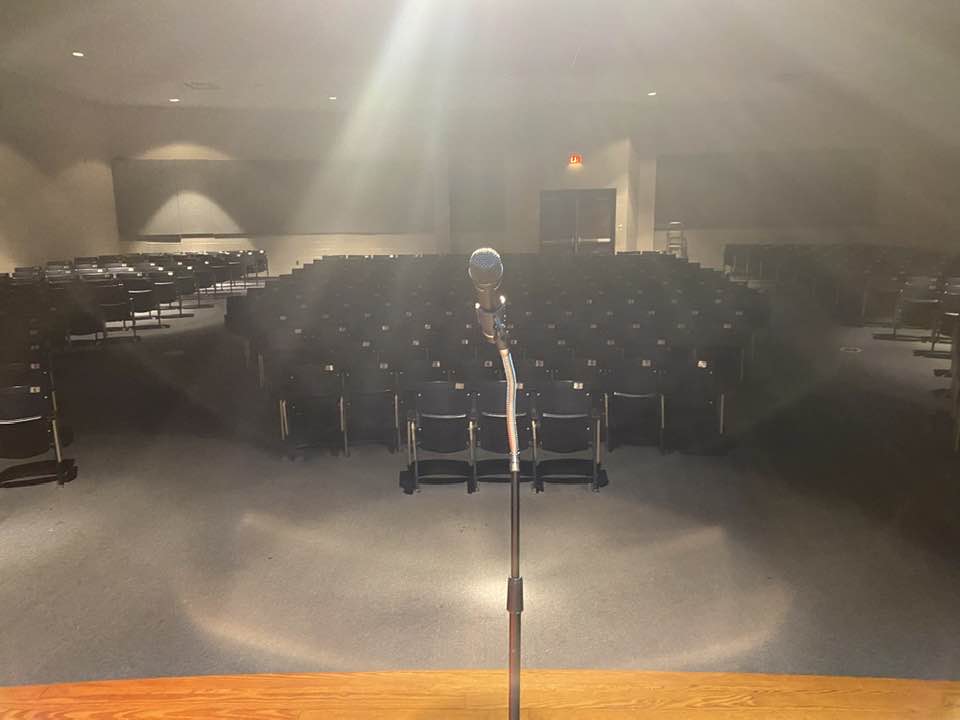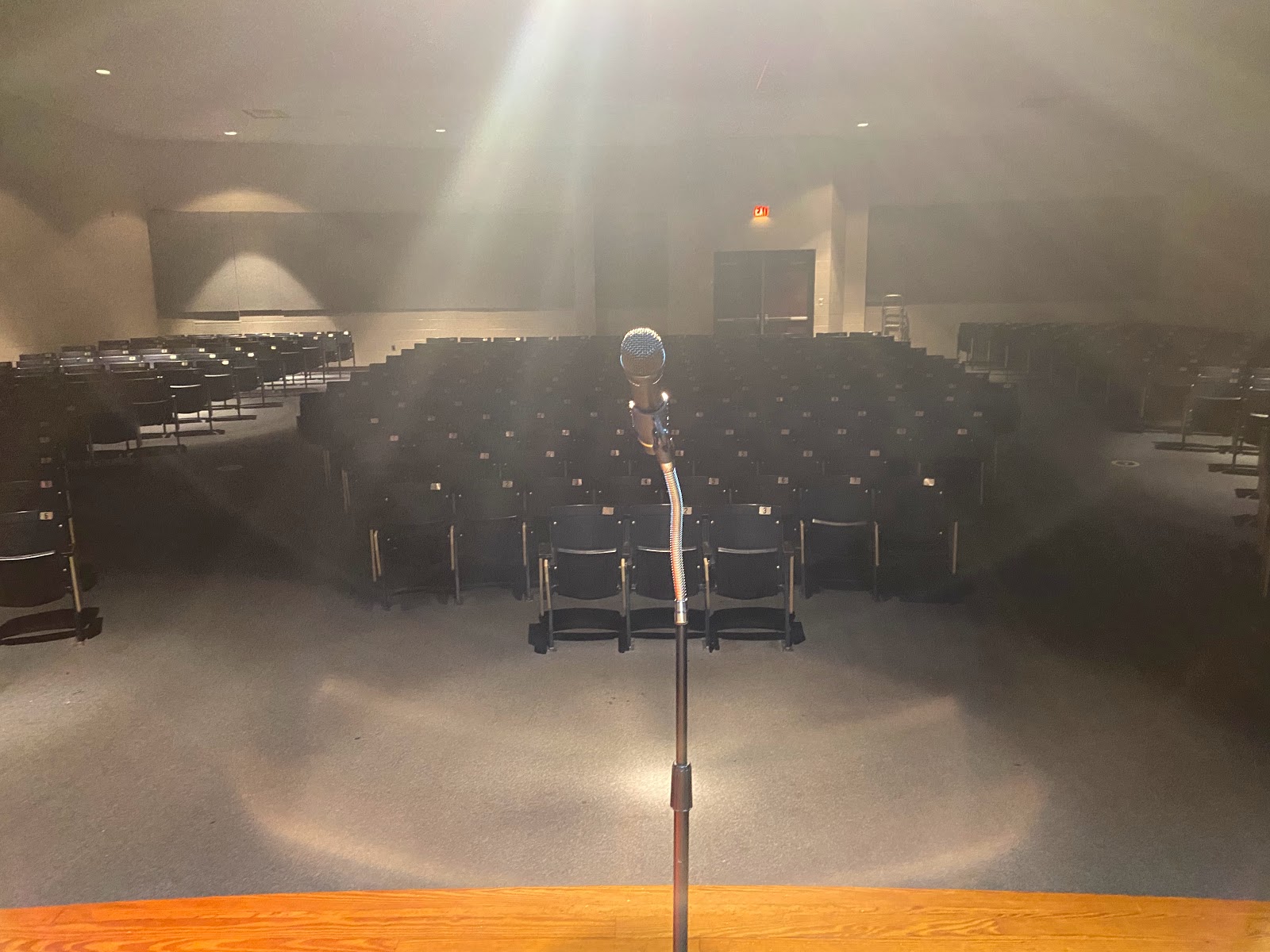Anyone who has ever performed for kids knows that you will sometimes find yourself in front of:
- A group of wriggly, squirmers.
- The kid who will not sit down
- The kid who is going to work hard to distract all of the other kids around them.
- The kids who have worked hard to sit next to the one person they mean to talk to for the next 45 minutes
- The kid with no sense of boundaries and cannot keep their hands to themselves
- The kid who has brought something really distracting to the assembly
Most of the time, the stories I tell are built to help these audiences throw off energy in a very controlled way so they can be successful listeners. I don't often have to
intervene to help the kids stay on track, but there are a few things I can do from the stage if I have to.In my perfect world, the teachers are on it and are doing crowd control, but that is not always the situation.
Many times, the teachers find themselves watching the performance and not the kids.
I get comments like, "I enjoyed that as much or more than the kids!"
That is wonderful. I am glad the adults get lost in the stories. Unfortunately, it makes my work a bit more challenging at times.
Over the course of my three decades doing this work, I have tried to come up with ways to help the audience and me get through a show together.
The best way to do this, in my experience, is to get the audience to monitor their own behavior in a constructive way.
Here are 4 strategies I employ.
1. When the kids are sitting "criss-cross applesauce" on the floor, I use a simple phrase to help keep them focused on their bodies. I typically use this with Kindergarten through second.
Okay, everyone, I want you to look down at your bodies. Are you sitting criss-cross applesauce? If you are, great! If you aren't, then you should sit that way. If you are up on your knees, the people behind you can't see. if you ever hear me say, "Check your body", it means
someone is up on their knees. Please look down and make sure it isn't you.
2. When a kid is focused on being disruptive I single out that behavior and try to get the kid to redirect.
Sometimes they are so wrapped up in their own thing, they don't even realize you are talking to them.
Then I say, "You know, I can see you. You are not invisible. Are you okay sitting there? Would it help you to be more successful if you sit somewhere else?"
This is something I use with 3rd grade and older. The whole point of this is to alert the teacher that they have a kid who might need to move. I sometimes give a student who is being repeatedly disruptive a chance to correct the behavior. If they continue, I ask them to move. If I ever have to do that, it typically stops anybody else from repeating that behavior. The kid has to be really disruptive for me to do that, but I will.
3. I include a stretch break for the youngest listeners. The first story in a set with littles - up to second grade - usually lasts about twenty five minutes to half an hour. I don't typically tell more than two stories per set with anybody. Anyway, after the first story, we spend three to four minutes stretching. We stretch sitting down, and then we stand up and stretch. The standing part includes marching.
This allows the youngest listeners - who have been focusing for a big chunk of time to get up and blow off some steam. Here is the stretch on their feet.
Okay, everybody! We are going to do a standing stretch break. Watch me so you'll know what you are supposed to do!
When you hear me say the word "Go" you will stand up and stare at me. I am going to stare at you. Then, we will march. (I start marching) The reason we are doing this is because you have been sitting so still. We need to get your body moving, your blood circulating!
When I hold up my finger over my head, we are going to march in one circle!"
(I show them what I want them to do)
 |
| source |
After that, were are going to MARCH!
(I march vigorously swinging my arms in an exaggerated fashion)
Then, we are going to raise our arms to the ceiling and take a deep breath. Then we are going to let it go. Then, we are going to take a deep breath. Then we are going to let it go.
We are going to raise our arms and stretch across the midline to activate one side of our brain! Then we are going to stretch across the midline on the other side!
Take a deep breath! Let it Go! Then we are going to sit down and I will tell you One More Story!
After that, we do the stretch together.
4. Releasing a large audience quickly - This is usually done if I have multiple sets and I need to get the previous audience out of the room as quickly as I can.
I need to find out which is the best grade level in this room.
Is it the Prek?
Is it the Kindergartners?
Is it the first grade?
Is it the second grade?
This is how I am going to find out.
The grade that gets out of here the quickest and quietest? That's the best group. I am going to let your principal know which was the best grade.
(This also works with the 3rd - 5th grade set.)
Turn and look at your teacher! Find them wherever they are and stare at them. Now, you can't get up until you get this signal. Everyone look
 |
| source |
(I make a gesture for the teachers to use. It is a universal "rise" motion)
You got it? Great! Look back at your teacher. Now, I am going to be listening to see which is the quietest group.
Don't stand up until you get the signal, and then follow your teacher out as quickly and quietly as you can. I don't even want to hear squeaky shoes.
Also, teachers, please don't stand them up all at the same time, that will defeat the purpose.
(Sometimes I offer to donate books or CDs to their media center if they are really quiet. Sometimes I just tell them I will let the principal know. Depends on the school)
Keep your eyes on the person in front of you so you don't have gaps in your lines!
I listen the entire time, praising the groups who are quiet and well- behaved - which is typically all of them.
It is a great way to get them out quickly without confusion. It is also very quiet. It helps me transition to my next audience!
Usually, the only people talking are the teachers, but I try to get them to model good behavior as well.
So, there you have it. A few strategies I have for keeping a large number of students engaged, involved, and monitoring their own behavior.
Hope they are helpful!
If you are willing to share your own strategies, I would LOVE to hear them. I am always learning!
Happy Telling!



